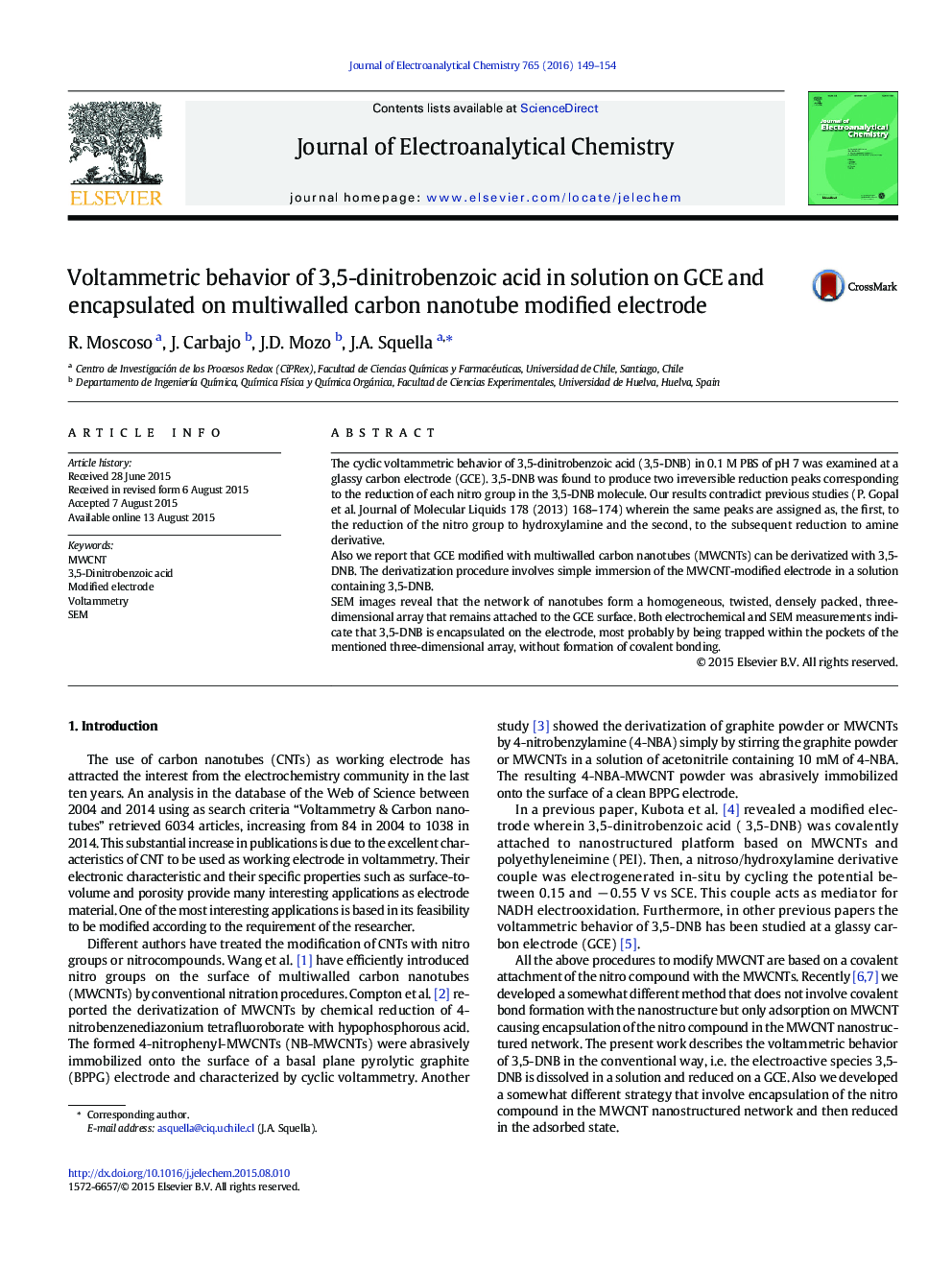| Article ID | Journal | Published Year | Pages | File Type |
|---|---|---|---|---|
| 218047 | Journal of Electroanalytical Chemistry | 2016 | 6 Pages |
•Correction of the previously reported voltammetric reduction of 3,5-DNB on GCE•A simple procedure to modify GCE with MWCNT and encapsulated 3,5-DNB•Voltammetric behavior of 3,5-DNB encapsulated on MWCNT modified electrode•In-situ electrogenerated R-NO/R-NHOH couple from MWCNT-3,5-DNB electrode
The cyclic voltammetric behavior of 3,5-dinitrobenzoic acid (3,5-DNB) in 0.1 M PBS of pH 7 was examined at a glassy carbon electrode (GCE). 3,5-DNB was found to produce two irreversible reduction peaks corresponding to the reduction of each nitro group in the 3,5-DNB molecule. Our results contradict previous studies (P. Gopal et al. Journal of Molecular Liquids 178 (2013) 168–174) wherein the same peaks are assigned as, the first, to the reduction of the nitro group to hydroxylamine and the second, to the subsequent reduction to amine derivative.Also we report that GCE modified with multiwalled carbon nanotubes (MWCNTs) can be derivatized with 3,5-DNB. The derivatization procedure involves simple immersion of the MWCNT-modified electrode in a solution containing 3,5-DNB.SEM images reveal that the network of nanotubes form a homogeneous, twisted, densely packed, three-dimensional array that remains attached to the GCE surface. Both electrochemical and SEM measurements indicate that 3,5-DNB is encapsulated on the electrode, most probably by being trapped within the pockets of the mentioned three-dimensional array, without formation of covalent bonding.
Graphical abstractFigure optionsDownload full-size imageDownload as PowerPoint slide
